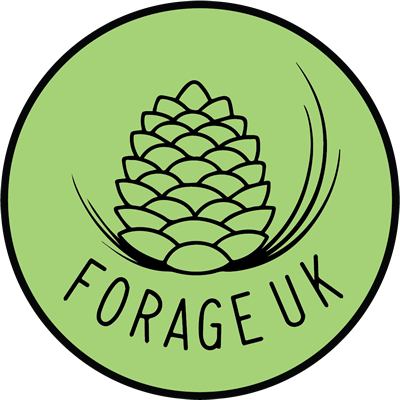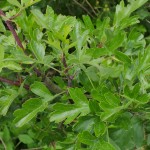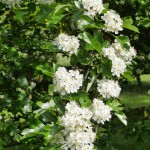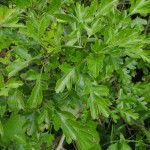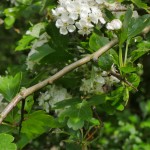Hawthorn
Common name: Hawthorn , Mayflower , Haw , Thornapple , Whitethorn , Hawberry. Bread and cheese
Scientific name: Crataegus Monogyna/Laevigate
Description
Hawthorn is a common tree/shrub that grows to be 5-15 meters in height it has a red brown knotty twisted trunk with many branches that are covered in many long sharp thorns from 1-5 inches in length. It has dark green deeply lobed leaves. The flowers appear from May to June and are small and white with five petals with a slight almond smell. Fast forward a few months to autumn and small red berries, with fill the branches in great numbers.
Habitat
Can be found in most hedgerows in towns and countryside, wastelands and woodlands. Hawthorns are commonly used as a livestock barrier/hedge in the UK. This is great for keeping animals in and humans out.
Uses
Hawthorn leaves can be eaten in the springtime, while they are soft and succulent, they are a nice addition to any salad. They are also used to make teas. The flowers can be used as a salad decoration or to make tinctures/wines. The berries taste a bit like apple and are best picked after they have been bletted (frozen). This allows them to become softer and sweeter in texture and taste. They contain a high amount of pectin and are a great addition to jams to help them set. They can also be used to make a fruit leather either on their own or accompanying other fruits, like blackberries, damsons and apples. A lovely hedgerow treat, a healthy alternative to shop bought confectionary.
Medicinal
Hawthorne can be used for boosting the immune system and regulating blood pressure. It has been used to treat cardiovascular disease and it is a good circulatory herb. It can be used as a digestion aid and It is an antioxidant. A powerful plant indeed, with many more health benefits. Caution is advised, as can cause side effects in some people. Disclaimer: You must not rely on the information on this website as an alternative to medical advice from your doctor or other professional healthcare provider. If you have any specific questions about any medical matter, you should firstly consult your doctor or other professional healthcare provider.
Other Facts
Crataegus is derived from the Greek word, Kratos which means strength because the wood is so strong and Akis, meaning sharp, is in reference to the thorns. The name Haw was originally and old English term for the word hedge.
Hawthorn is a source of food and shelter for many birds’ mammals and insects. The hawthorn is steeped in so much history and folklore, from the crown of thorns placed on Christ’s head at the crucifixion and has been associated with witches, who were supposed to have made their brooms from it. The hawthorn is considered unlucky in some parts, so people would refrain from bringing the branches and blossom into their houses.
‘The hawthorn bloom and elderflowers, will fill a house with evil powers’
(Langford 1875)
Although many local tales speak of sickness, financial loss or even death would follow if disturbing, cutting, hanging out washing from its branches or even plucking a leaf, there were as many equally good believes. Some would hang a twig above doorway to protect and keep witches out. It was also thought that sitting under a hawthorn tree would protect from witches. Old proverb on advice on where to shelter from lightening during a thunderstorm:-
‘Beware of an oak, it draws the stroke; avoid an ash, it counts the flash; Creep under the thorn, it will save from harm’
